The "courier" in the human body is published on Nature!The post -blog post is about to return to China to teach 985 colleges and universities
Author:Scientific network Time:2022.06.26
Text | "China Science News" reporter Zhang Qingdan
Where can I send it, there can be a "courier" in the human body.
It is a pea -size robot.
Related papers were published on June 15th on Nature Communications of Nature. The first author was the post -doctoral disorder of the Department of Mechanical Engineering of Stanford University in the United States. He will return to China to teach at Xi'an Jiaotong University in the second half of this year.
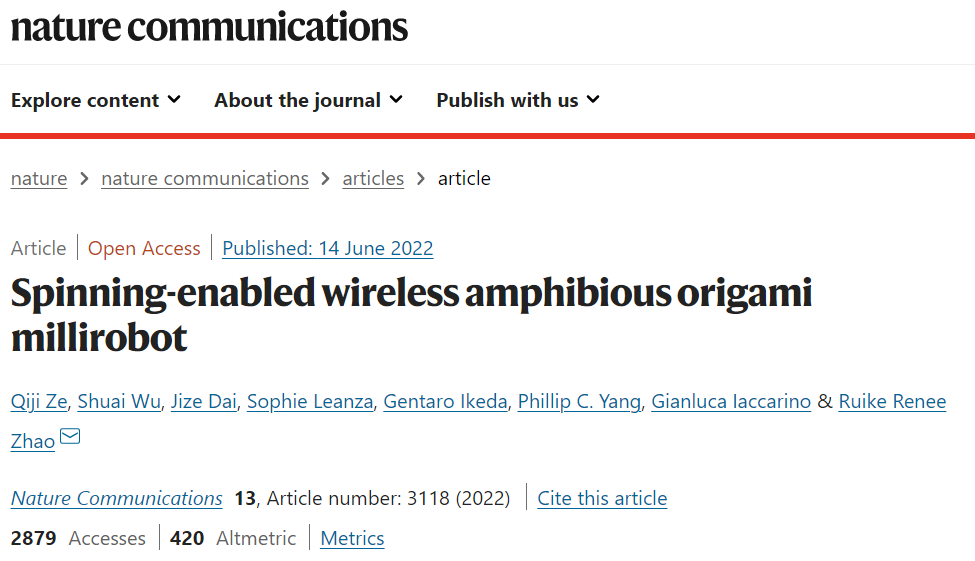
"The most powerful micro -robot"
"We all think that this machine is the most powerful micro -robot we developed by us. I hope that it can be applied to the human body in the future." Abandoned illness told the China Science News.
It is a wireless controlling water and land amphibious origami robot. By rotating and folding functions, it can move quickly in complex terrain and swim freely in the liquid. Not only can the liquid drugs be released on demand, but also actively absorb the objects to transport the body.
The idea of this robot originally originated in 2020. In a conventional discussion of abandoning the illness and mentor Zhao Ruikeng, Zhao Rui Ke proposed, "We used the Kresling origami structure to design the robotic arm and on the land. The geometric form has a structure similar to the propeller. If we can use the magnetic field to make it rotate at high speed, can we generate propulsion in the water? "
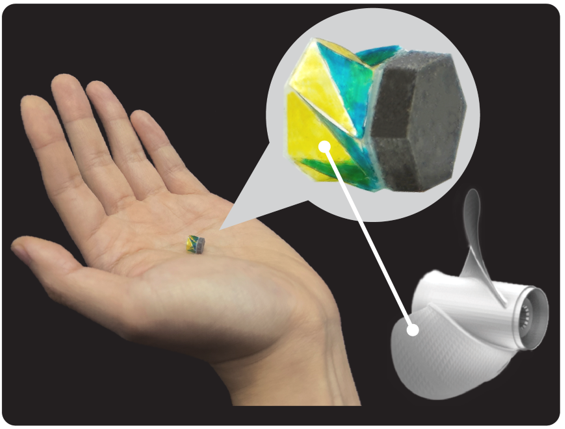
Kresling origami robotic propeller structure. Interviewee confidence
After the first attempt, the robot does move forward during the rotation of the water. However, at this time, robots can only swim in narrow waters, and the application scope is relatively limited. In order to overcome this shortcoming, at the group meeting, everyone discussed enthusiastically, and then conducted in -depth research in the mechanism. Finally, it was found that the density of the robot would have a great impact on the performance of the motion.
“我们花了大量时间尝试不同的设计和小型化,让机器人在水里能产生理想的推进力。同时为了丰富机器人的功能和扩展应用场景,我们探索了在多种环境里的运动,比如陆地, Internal environment of the human body in the water and high -stick surfaces. Continuous design and optimization, the sports environment is not limited. "Zhao Rui Ke, author of the paper communications and assistant professor at Stanford University in the United States, told the China Science News.
At the same time, considering the narrowing of the human environment, the size of the robot has been sharply reduced. In the article, the robot diameter is 7.8 mm, only the size of peas, which is smaller than conventional capsules. After the article was published, they further reduced the diameter of the robot to 2 mm -only the size of the glutinous rice, and it hoped to be applied in the blood vessels in the future.
With free movement micro -robots, it also needs to give it the ability to achieve tasks. At this time, the inherent deformation characteristics of the origami structure played a role at this time. When the magnetic field that changes the cycle, the robot can be contracted circulating, triggering the internal drug release mechanism, and cooperating with the robot's motion capabilities to realize the orientation and quantitative medicine.
In addition, by introducing openings in different parts of the robot, a negative pressure area can be generated inside the robot when rotating at high speed. This mechanism can not only be used to increase the speed of robotics, but also can be used to actively absorb objects.
After nearly two years of "polishing", the team is very satisfied with the functionality and strong environmental adaptability of the robot. After several rounds of modification and improvement, the article contributed Nature Communications in March this year, and was successfully received in about two months.
The reviewer also believes that the design of this robot is very clever, the robotic institution is simple, but it can achieve extremely complex functions. On the day of publishing the paper, Nature reported the results as a research on the research highlight.
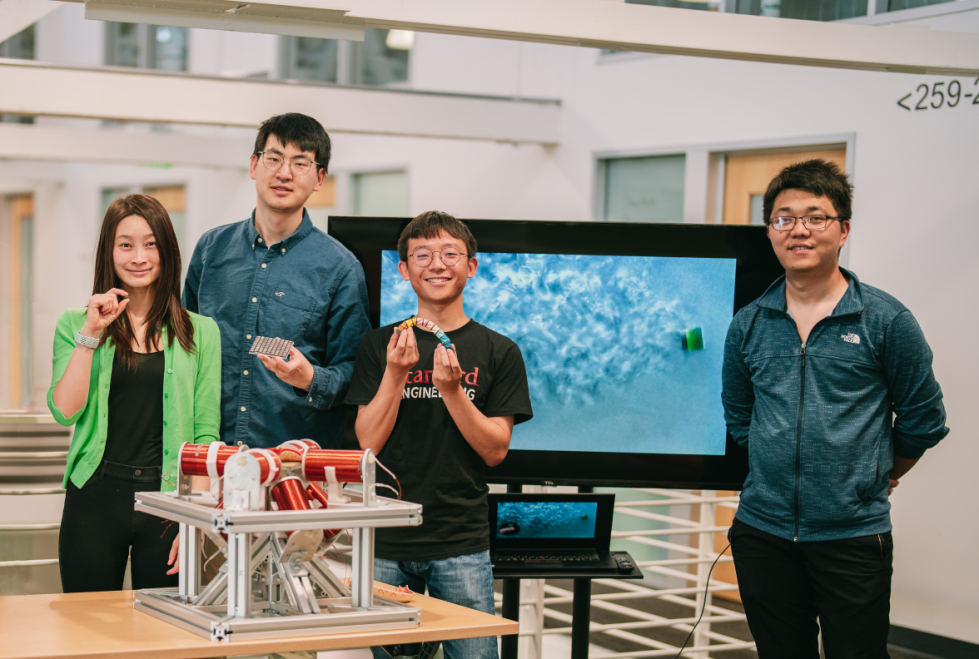
Zhao Rui Ke team: Zhao Rui Ke from the left, and the right one abandoned the disease. Interviewee confidence
"I feel that I am adventurous": exploration of interdisciplinary disciplines
It has been 4 years since Zhao Ruikeng's team has been engaged in post -doctoral research. Recalling when he chose to join this team, he was "very courageous".
Both abandoned and universal and universities have been completed in China. Electrical engineering and automation they have studied are all motors and electromagnetic control. And Zhao Rui Ke's team mainly conducts research on mechanics, machinery and intelligent materials. The two are completely different discipline backgrounds.
"Teacher Zhao analyzed me the broad prospects of electromagnetic control in the field of smart materials and software robots. However, when considering whether to join her team, I was tangled for a long time. After all It is easy to open up the new world, and everything is easy to talk about. "
In Zhao Ruifeng's eyes, abandonment of illness is a person who has a high enthusiasm for scientific research and will continue to follow the academic road. "He has many strong items."
"I felt really risky at the time, but since the teacher dares to recruit me, I dare to go. At that time, I thought that there were a few times in life, and I failed to go home to sell sweet potatoes!"
One of the main research directions of the team is the research of micro -robotics and hopes to be applied in the field of life and medical care.
Targeting is a research that is currently very concerned about in the medical community, and any disease urgently needs to realize this technology. The reason is very simple. Usually oral medicine, the drugs will be diluted in the human body. The place where the drug treatment is really needed can only be divided into a little bit, which greatly reduces the effect of the drug.
If you want to send a precision medicine delivery robot in the human body, you have to make the size very small. In Zhao Rui Ke's view, the smaller the size, the better, so that there are more places in the human body, and the tasks that can be executed are more diverse. Under this goal, it means to remove various types of electronic devices on traditional robots. At the same time, the wired driving method will also have many restrictions on the application of the human body. Due to the characteristics of wireless control, the magnetic field has become an ideal option. As a result, the study of electromagnetic control that was good at abandoning illness came in handy.
The robots they researched were very dexterous. They completely used magnetic drives to control the rotation and contraction of the robot: rotation can achieve all the movement functions and achieve the effect of water and land amphibious. Sex, give robotic administration functions, release drugs at the specified place.
Under the control of the magnetic field, these robots "courier" move forward very fast. Even if they are marching in liquids, they can reach more than 10 cm per second. And the medicine will not be lost halfway, and it can be sent to the designated position safely and quickly.
Pea -size robots can act flexibly in a complex human environment and accurately administer it. Interviewee confidence
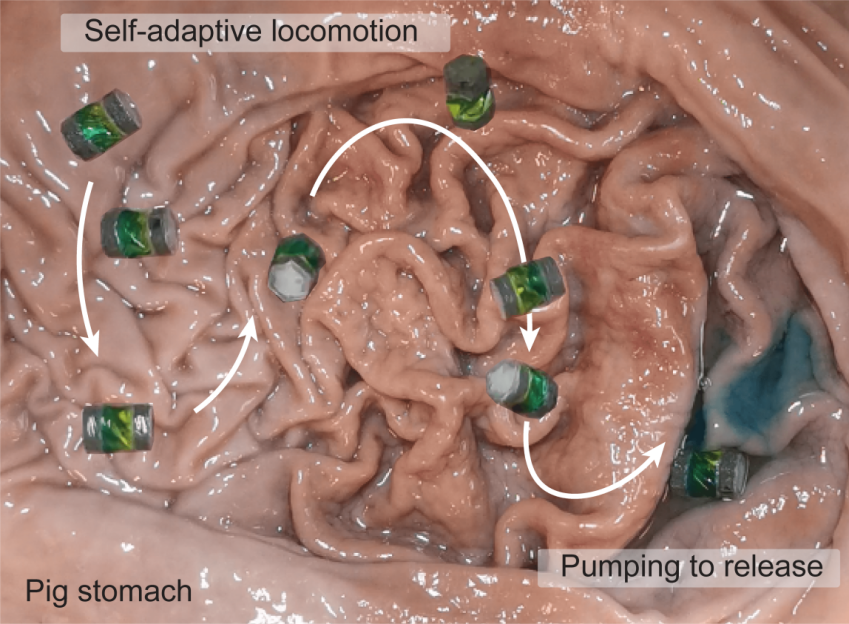
In the future, it can also install miniature cameras in the body, for endoscopic examination and biopsy, etc., and can even help remove blood clots in the complex blood vessel system to help treat stroke or heart disease.
From regret, unwillingness, to looking forward to the future
From undergraduate to the present, there are too many emotions in abandonment.
"When I was in college, I was a little slack, and I did not devote myself to learning in the early days. After the Scholar Research, although I was interested in scientific research, I also took the initiative to participate in the robot competition. ","
After a period of depression, the abandoned illness gradually realized that this state was very dangerous. Therefore, he began to re -examine himself, forced himself to focus on research, and adjusted his life, and took the initiative to find the mentor to report the work and discuss the direction of scientific research on a regular basis, so that everything was restarted.
Although it changed, I was still tangled in abandoning my heart. I felt very regrettable that I was "too late to realize some truths and waste a lot of time."
"After graduating from a PhD in 2018, I have some unwillingness to know if I still have the potential. So I want to go abroad to be a post -doctoral, go to the new cutting -edge research position, to learn new knowledge, accumulate more more The results. "
When he first arrived in Zhao Rui Ke's team, he abandoned his illness in scientific research. The American educational style and scientific research environment is completely different. Coupled with the difficulty of interdisciplinary, he must adjust his previous research habits and thinking models to adapt the process is more painful.
With a thousand miles away from my family, I live in two points of life in the laboratory and dormitories almost every day. The busy scientific research work makes abandonment of no time to take care of others.
He could persist all the way, inseparable from the strong backing of his wife. "I am very grateful to her support and understanding. Different love is difficult, not to mention we are still exotic. She is a classmate in my master's degree. There are many common topics in life and work. She also understands my nature of work. So we have never quarreled, and we often cheer each other when emotional. "
Having said that, he also thanked Wu Shuai, a doctoral student in the laboratory, and he was also a common work of this paper. In addition to mutual help in scientific research, they are also the closest partners in life.
The results published on April 1 were selected as Science Advances cover thesis
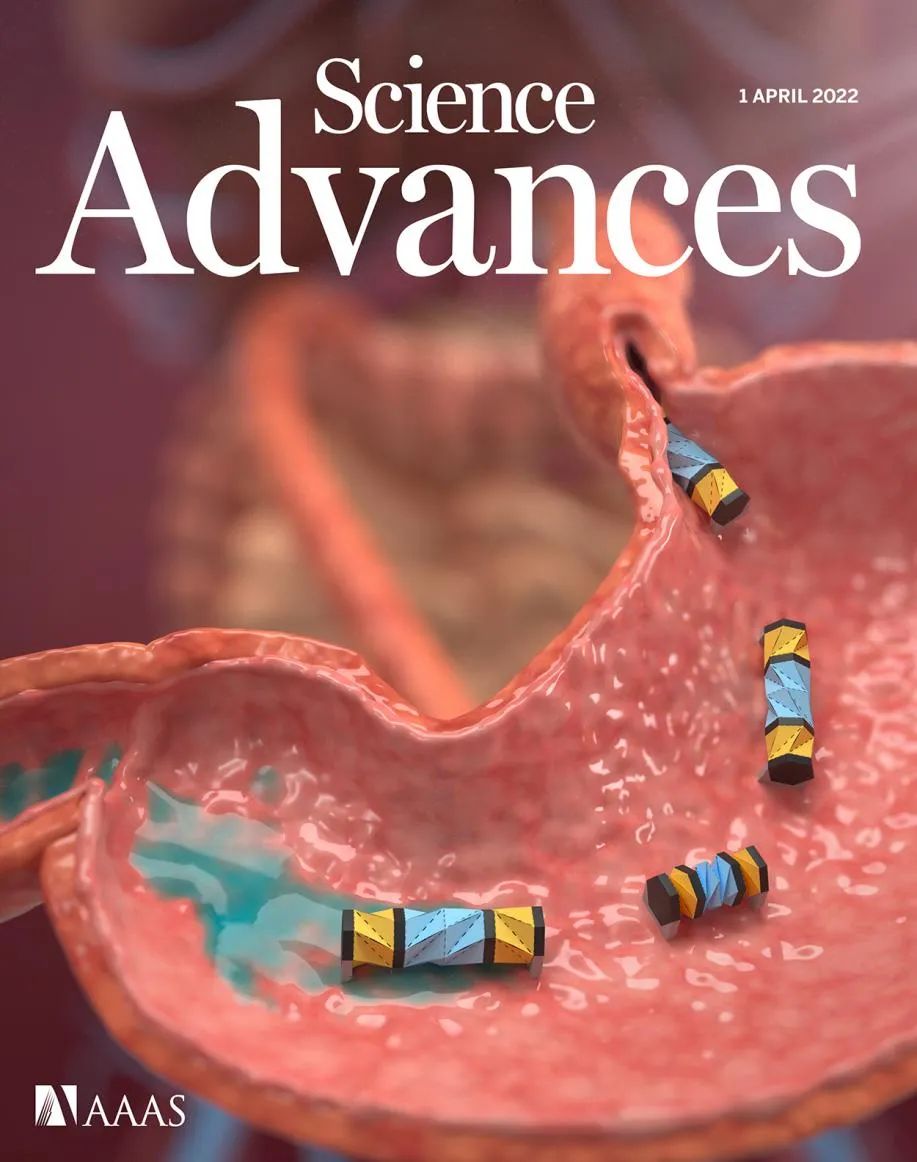
Four years of Dai Xing Daiyue engaged in scientific research, and also achieved the results of satisfying himself. Only this year, two papers have been published as a work. In addition to this article mentioned earlier, another article was published on Science Advances on April 1 in the form of cover papers, reporting a origami -structured crawling robot.
"Although I have experienced a lot of twists and turns in the early stage, fortunately, the results are not bad. I feel that my efforts are not in vain. Now that I think about it, although I have walked a lot of detours, all experiences have unique significance. It's good, don't have to put too much mental pressure on himself. "He said that he was most looking forward to getting back to China to reunite with his family. In the future, he also hopes to make robots that can really be applied to medical care.
Pea -sized water and land amphibious origami robots can achieve functions such as underwater advancement, targeted quantitative medicine, and absorbing objects.
Thesis link:
https://www.nature.com/articleS/S41467-022-30802-w
https://www.science.org/doi/10.1126/sciadv.abm7834
Edit | Fangyuan
Capture | Guo Gang
Data-nickName = "Science Network" Data-ALIAS = "ScienceNet-Cas" Data-Signature = "In-circle major events, industry insights, occasionally gossip ... Produced from the world's largest Chinese science community, Chinese Science News Agency. Contact us: Cooperation: Cooperation: Cooperation:Market@stimes.cn; submitting tougao@stimes.cn. "Data-from =" 1 " /> Cooperation matters: hezuo@stimes.cn
Submission: Tougao@stimes.cn
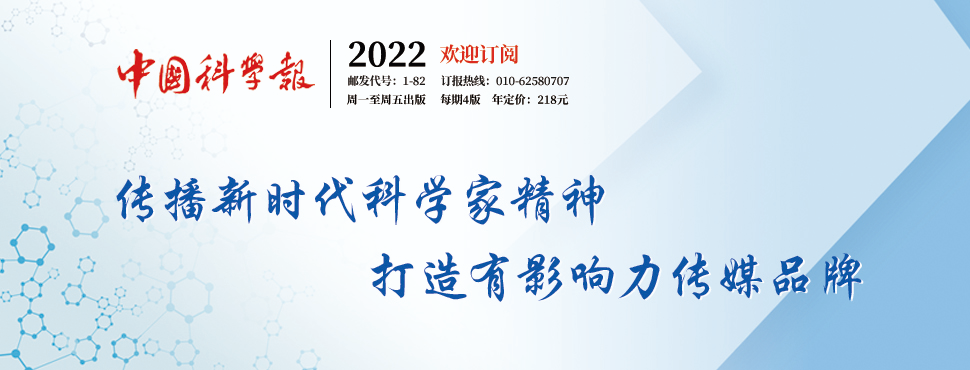
Like this article?Praise + watch support!


- END -
Dream Chaser 丨 Ding Weiwei, a researcher at the second institute: listening to the magical "sound" of the sea floor
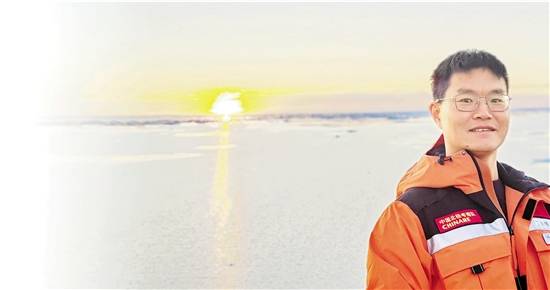
Zhejiang News Client reporter He DongjianIn 2021, Ding Weiwei carried out scientif...
East -West Lake Science Wisdom Smart walks into Du Gonghu National Wetland Park and Crown Cake Factory
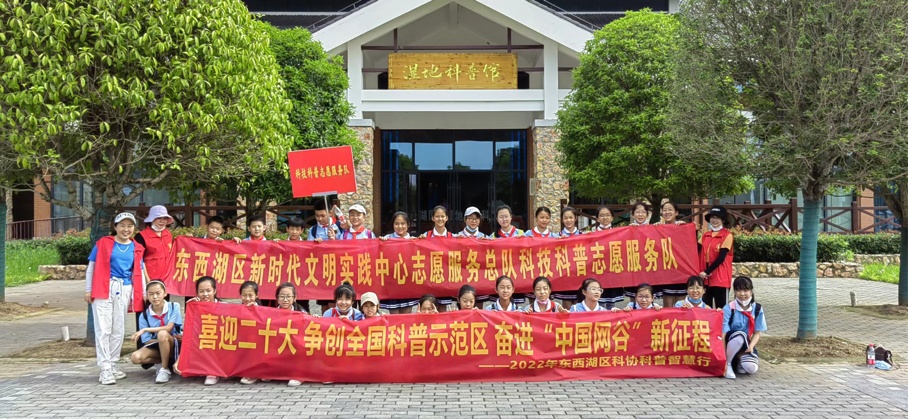
Urban Green Wedding Environmental Protection Smart Enterprise Look at Technology